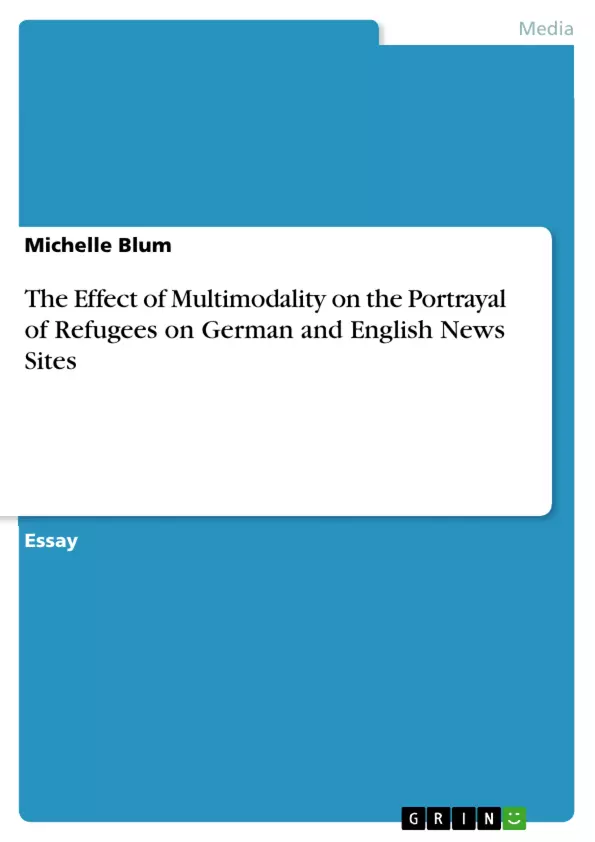This paper explores how a German and an English news website, Spiegel online and BBC online, respectively, present some of the actual people behind the term 'refugee': A Syrian family of seven and a lone Syrian man. Both have faced hardships, both have a similar cultural background and both want nothing more than to integrate into German society and "become German".
In 2015, the already tense situation in many Arab countries, chief among them Syria, escalated. While many Syrians had already sought asylum in neighboring states such as Turkey and Jordan since 2011, when the Syrian Civil War first led people to flee their country, the vast refugee population in the neighboring countries eventually forced many to go elsewhere. At first, the refugees’ predicament seemed solved: Many Europeans had a "Refugees Welcome" mentality, welcoming the new arrivals with open arms and hearts.
This changed, however, with more and more people coming to the country and politicians seemingly at a loss on how to organize the situation. The circumstances for the new society members became difficult. They were disliked by many for the sheer fact that they were part of a different culture. A majority of the refugees lived in crowded refugee camps, bored out of their minds, often not allowed to work, out of money since having spent the last of it on the way to Germany. The media also could not decide how to portray refugees: Were they victims, perpetrators? As Chouliaraki put it, the news on the topic of refugees has been "a constant struggle of shifts and turns over the narration of refugees in news journalism".
Inhaltsverzeichnis (Table of Contents)
- Introduction
- Theoretical Background
- Methods
- Results & Discussion
- Conclusion
Zielsetzung und Themenschwerpunkte (Objectives and Key Themes)
This paper explores the portrayal of refugees on two prominent news websites: Spiegel online (international version in English) and BBC online. The study aims to analyze how multimodality, the interplay of different media aspects, affects the presentation of Syrian refugees in these news outlets. Two specific case studies are examined: a Syrian family of seven and a lone Syrian man. Both face challenges integrating into German society.
- Multimodality in news discourse
- Impact of multimodality on emotional responses to refugees
- Comparison of refugee portrayal on British and German news sites
- Integration of Syrian refugees in German society
- The "Refugees Welcome" mentality and its evolution
Zusammenfassung der Kapitel (Chapter Summaries)
- Introduction: This chapter provides a brief overview of the Syrian refugee crisis and its impact on Germany. It sets the context for the study by highlighting the changing public perception of refugees and the role of media in shaping these views.
- Theoretical Background: This chapter introduces the concept of multimodality and its significance in media discourse. It discusses the different modes of communication used in news websites and how their interplay creates meaning.
- Methods: This chapter outlines the research methodology used in the study, including the data collection process and the analytical framework. It explains the selection of articles and the specific criteria for analysis.
Schlüsselwörter (Keywords)
The main keywords and focus topics include: multimodality, media discourse, refugee portrayal, Syrian refugees, BBC, Spiegel online, integration, cultural differences, news journalism, emotional response, positive and negative connotations.
- Quote paper
- Michelle Blum (Author), 2018, The Effect of Multimodality on the Portrayal of Refugees on German and English News Sites, Munich, GRIN Verlag, https://www.grin.com/document/1128285



